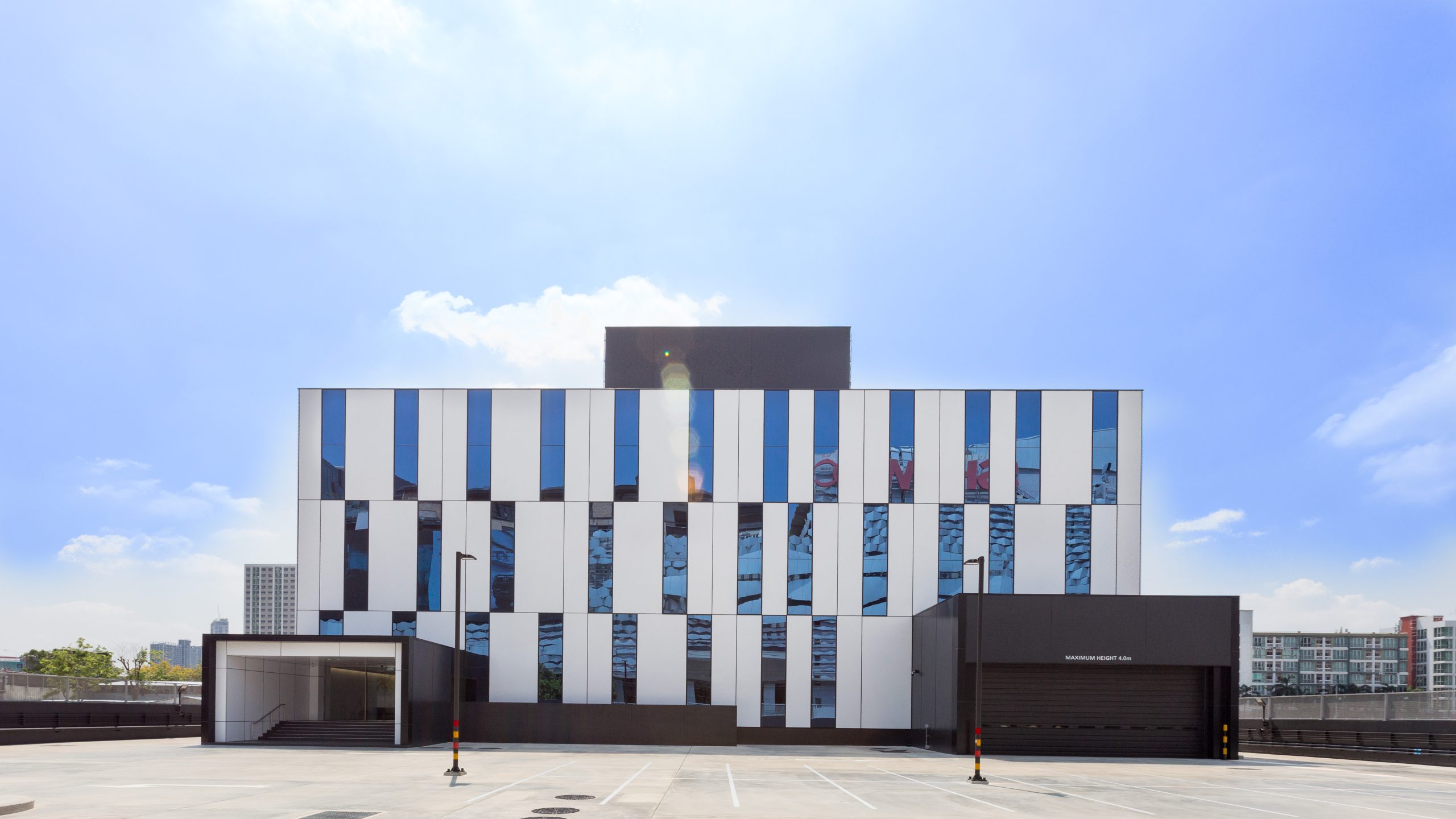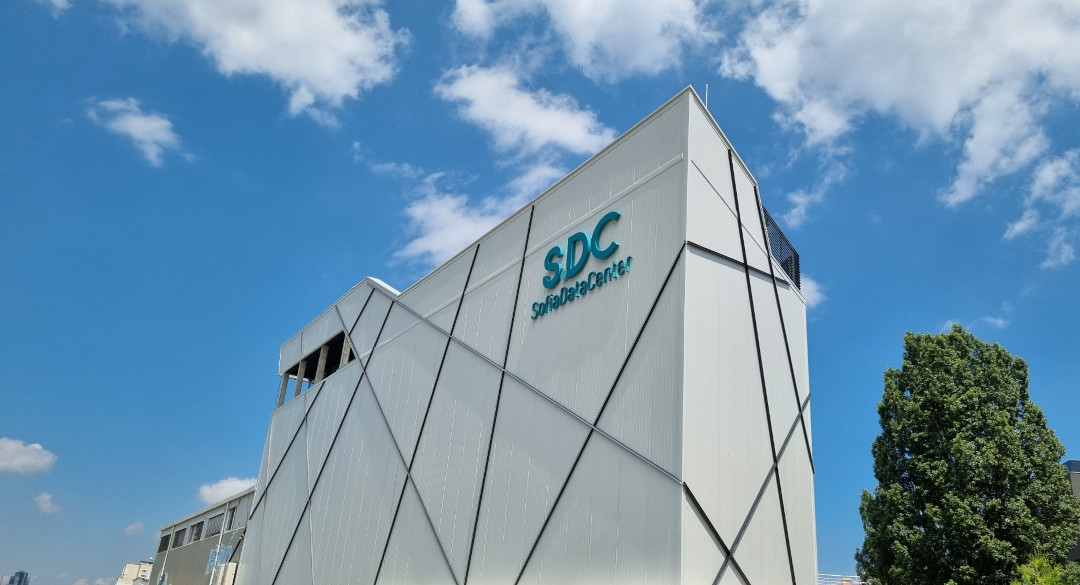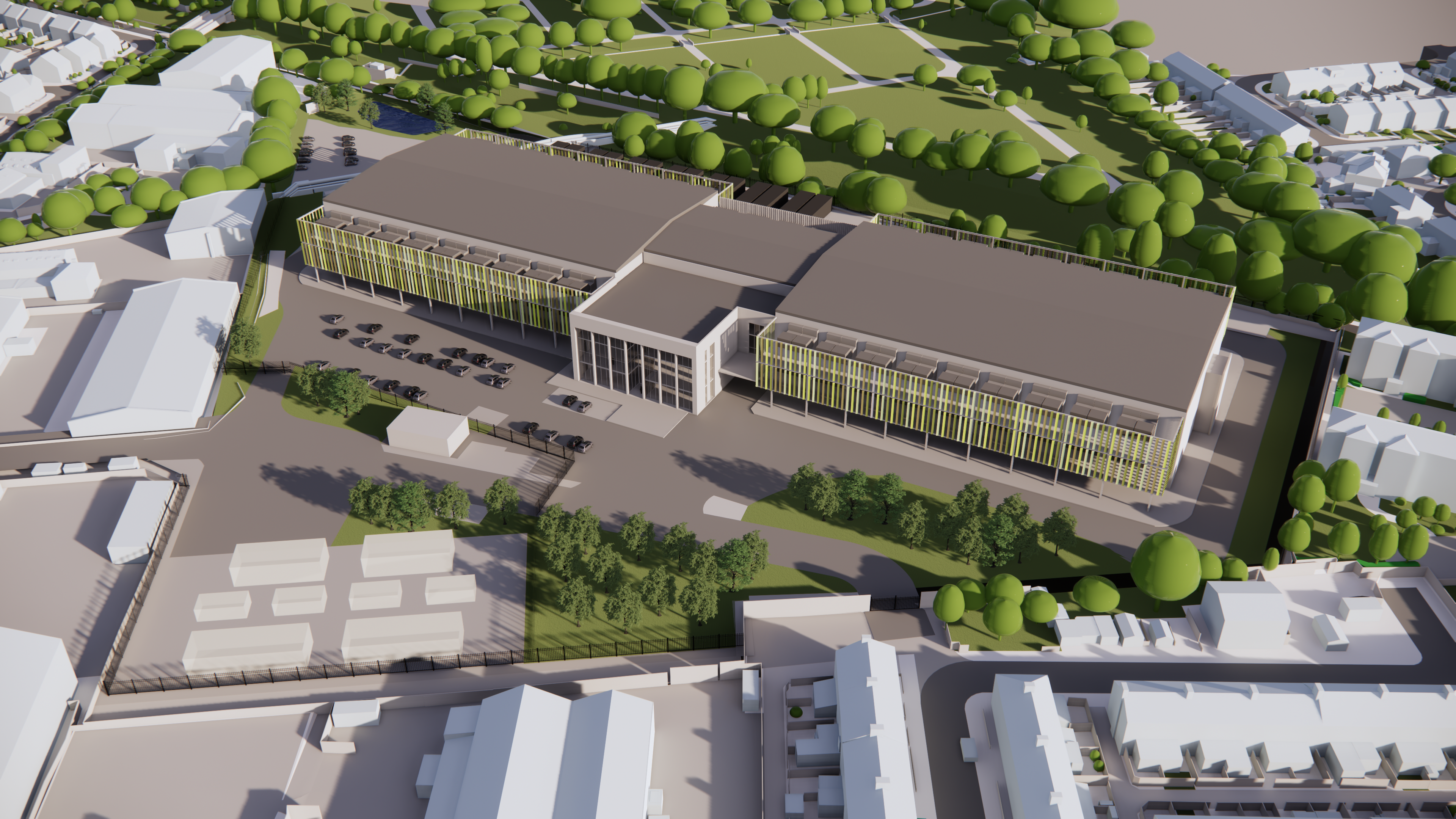Insights into Data Centre Investment & Market Growth
Data Centres
Insights into Data Centre Investment & Market Growth
KKR to acquire stakes in Singtel’s regional data centre business
Singtel and KKR have reached a definitive agreement, under which a fund managed by KKR will commit up to S$1.1bn for a 20% stake in Singtel’s regional data centre business.
This investment puts the enterprise value of Singtel’s overall regional data centre business at S$5.5bn. KKR will have the option to increase its stake to 25% by 2027 at the pre-agreed valuation. The collaboration is a first between Singtel and KKR, and enables Singtel to tap on KKR’s expertise investing in data centres and critical telecommunication infrastructure globally in addition to capital.
The proceeds from this transaction will be used to accelerate the expansion of the regional data centre business across ASEAN markets, including Singapore, Indonesia and Thailand, while exploring markets like Malaysia and others. This will widen the business’ strategic choices, giving a variety of options to monetise in the future.
Southeast Asia’s data centre market is expected to grow by 17% over the next five years compared to 12% for the rest of the world, with US$9bn to US$13bn in investments projected to flow into the region. While data centre capacity is poised to increase at a compound annual growth rate of 19% from 2021 to 2026, demand is expected to outpace supply driven by increased data consumption, enterprises transitioning to the cloud and the rapid rise of AI in the region.
Malaysia, Indonesia and Thailand could see the biggest increase in capacity with Johor, in particular, benefiting from spill-over demand from Singapore due to the island state’s supply constraints. The growing need to handle high performance computing tasks, such as generative AI, will also spur a significant growth in GPU-powered data centres in the years to come.
Click here for more latest news.
Isha Jain - 25 September 2023
Artificial Intelligence in Data Centre Operations
Big Data Strategies for Smarter Operations
Data
Data Centre Infrastructure News & Trends
Data Centre Operations: Optimising Infrastructure for Performance and Reliability
Data Centres
Infrastructure Management for Modern Data Centres
Insights into Data Centre Investment & Market Growth
News
atNorth announces highest revenue to date
atNorth has announced a group income of SEK 560 million (EUR 53 million) as it publishes its 2022 annual accounts. This figure represents a 44% increase in revenue from 2021 and further growth is expected in the coming years.
The company currently operates six data centres based in Iceland, Sweden and Finland. It is planning further state-of-the-art sites in the coming years. atNorth‘s growth calls for extensive investment and it has secured access to capital for this purpose. The investment for the year 2022 amounted to about SEK 220 million (EUR 20 million), and it is already evident that the 2023 level of investment will be significantly higher.
Eyjólfur Magnús Kristinsson, CEO of atNorth, says, "In recent years, we have built an enormous wealth of knowledge. Our customers value our services and it is core to atNorth's good reputation." He also commends the support of the company‘s sponsor, Partners Group, that acquired the majority of the company's shares at the beginning of 2022.
As digital transformation and the use of AI and other big data projects escalates, businesses are becoming increasingly reliant on supercomputers to perform ever more complex calculations. The resulting need for high performance data centre and supercomputing services has led to an exponential increase in demand in recent years.
atNorth continues to promote the Nordic region as a superlative location for investment in digital infrastructure, recently winning the ‘Tech Capital Location’ award for Iceland as a result of its advantageous climate, favourable business environment and cutting-edge infrastructure. Eyjólfur comments, “Iceland is truly on the map, and with our best-in-class data centres, outstanding customer service and proficient marketing communications, atNorth is proud to have created a desirable position in the market.”
Isha Jain - 12 July 2023
Artificial Intelligence in Data Centre Operations
Data Centre Operations: Optimising Infrastructure for Performance and Reliability
Infrastructure Management for Modern Data Centres
Insights into Data Centre Investment & Market Growth
Sustainable Infrastructure: Building Resilient, Low-Carbon Projects
STT GDC and Firmus to build sustainable AI factories
ST Telemedia Global Data Centres (STT GDC) has announced a significant investment into a global venture with Firmus Technologies.
The venture is to be based in Singapore and will see the launch of a GPU-centric Infrastructure as a Service (IaaS) offering focused on deep learning AI and visual computing workloads, to be known as Sustainable Metal Cloud (SMC).
SMC will deliver bare-metal-service access to high-performance AI clusters, which include some of the world’s most advanced workload accelerators including GPUs and high-speed networking from NVIDIA for energy-efficient computing.
It will leverage Firmus’ proprietary, scaled, immersion-cooled platform, the HyperCube, to deliver sustainable AI factories that are all at once sustainable, scalable, high-performance and cost-effective.
Within the HyperCube, Firmus will operate a fleet of high-performance servers provided by OEM partners including Supermicro. It unlocks access to world-class AI tools and hardware in a highly available way.
The SMC is being launched in Singapore, India and Australia in 2023, with the Singapore AZ (SIN01) expected to be live in H2 2023.
The combination of Firmus’ platform, paired with STT GDC’s highly efficient data centre infrastructure, will result in AI workloads running with a lower PUE, lower CO2 emissions and higher petaflops per watt.
“The compound growth in forecasted energy consumption is an existential threat to the data centre sector. Data centre operators and their customers must be prepared to embrace and support new cooling solutions and expand the services they offer beyond traditional air-cooled colocation if they are to host AI GPU platforms in a sustainable manner. The evolution of the data centre into AI factories of the future will fundamentally change the way that all infrastructure operators are thinking about the design and operation of their facilities. STT GDC’s foresight and long-term vision made them the ideal global partner for Firmus’ highly developed solution,” says Ted.
“The future of data centres will rely on the ability to provide both exceptional performance and highly sustainable services at scale. From our beginnings in Singapore almost 10 years ago, we now have scaled the business to cover 10 geographies. We are immensely pleased to enhance our core co-location offering to include the latest GPU-based bare-metal services, empowering our customers with access to the next generation of high-performance computing which will be so critical in the AI revolution. These high-performance services are a key component of the critical infrastructure needed to support the plethora of AI use cases that will be critical to business, governments and society in years to come,” says Bruno Lopez, President and Group Chief Executive, ST Telemedia Global Data Centres.
Isha Jain - 22 June 2023
Data Centres
Insights into Data Centre Investment & Market Growth
Telehouse Thailand celebrates the opening of its new data centre
Telehouse has officially opened its first Thai data centre at the prime location of Rama 9 in Bangkok with an investment of $74 million, aiming to create a connectivity ecosystem and become the first purpose-built data centre to achieve 100% power supply by renewable energy in Thailand.
The event was joined by Kazuya Nashida, Embassy of Japan in Thailand; Sonklin Ploymee, Deputy Secretary General; Thailand’s Board of Investment (BOI) and credible partners from Thailand and other countries to mark the opening in Bangkok.
Bangkok is the newest location among 45 Telehouse locations in the world. Telehouse Thailand is its third footprint in south east Asia, with a building area of 9,000m2 and a 9.5MVA power capacity. With the location in the centre of Bangkok, the data centre focuses on Telehouse’s interconnection strategy, aiming to be the internet hub data centre where multiple telecommunication carriers and service providers interconnect and exchange data traffic domestically and internationally.
In addition to the goal of developing and promoting the network system in Thailand, Telehouse Thailand is also keen on green environmental initiatives and to be the first data centre in Thailand to procure 100% renewable energy-based electricity, aligned with the Telehouse global target of achieving net zero CO2 emissions by 2026.
Ken Miyashita, Managing Director of Telehouse Thailand, says, “We are very excited to announce and celebrate our official opening in Bangkok. With our location in the heart of the city, Telehouse Thailand will provide secure and reliable data centre services to act as a connectivity hub in south east Asia. We are ready to elevate data centre standards and contribute to the digital society in the country and region.”
Beatrice - 2 June 2023
Data Centres
Insights into Data Centre Investment & Market Growth
Neterra listed as key data centre investor in Europe
Neterra has been recognised as one of the ‘Prominent Data Centre Investors’ in Europe alongside names such as Amazon Web Services, Facebook (Meta), Equinix, Google, Microsoft, NTT Global Data Centers, and Orange Business Services.
The ranking is part of a research made by Arizton Advisory and Intelligence titled ‘The European Data Center Construction Market - Industry Outlook and Forecast 2023-2028.’
With nearly 30 years of experience in the global telecommunications market, Neterra is a trusted provider of data centre solutions and global connectivity for both the world's largest companies and small and medium-sized businesses.
The company owns four data centres and provides first-class colocation, fast and secure connectivity, energy efficient cooling systems, top-notch equipment, servers, and support from a professional team 24/7.
Neterra's data centres operate under the brand Sofia Data Center - SDC. Two of them are in the capital of Bulgaria, Sofia, on a common campus. They are built and equipped in accordance with the highest standards in the industry and provide their customers with connectivity with the largest telecom operators in the world.
SDC Stolnik is part of Data Centre Park Stolnik - the largest data centre and telecommunications hub in south-eastern Europe. It offers unlimited colocation space and power, as well as specially designed crypto-mining rooms.
SDC Ruse is the main point of presence of BFOR - the shortest optical route between Romania and Turkey. With its strategic location and reliable redundant connectivity, SDC Ruse is a suitable alternative to prevent the interruption of essential business processes during disasters and accidents.
Through its data centres and already-established global network of more than 200 points of presence in more than 65 countries, Neterra provides a broad portfolio of services. Companies trust telecom for international connectivity, guaranteed business internet (DIA), global peering, DDoS protection, data centre services, rental servers, cloud solutions and more.
Beatrice - 30 May 2023
Data Centres
Insights into Data Centre Investment & Market Growth
News
Scalable Network Attached Solutions for Modern Infrastructure
Manulife Investment Management acquires controlling interest in Serverfarm
Manulife Investment Management (Manulife IM) has announced that it has entered into a definitive agreement to acquire a controlling interest in Serverfarm. The investment by Manulife IM, together with support from existing shareholders, will provide capital to Serverfarm to continue its expansion across north America, Europe, and Israel to capitalise on attractive market opportunities.
Serverfarm currently operates a portfolio of eight data centres across north America, Europe and Israel that aggregate more than 1,500,000ft² and 125MW of IT capacity, and it has secured additional land for future data centre developments.
“Avner and the Serverfarm team have built a high-quality data centre portfolio and growth platform that is well-positioned to capitalise on the strong secular tailwinds in the data centre market,” says Recep Kendircioglu, Global Head of Infrastructure, Manulife Investment Management. “We are excited about the company's future and our ability to support Serverfarm through its next phase of growth on behalf of our clients.”
“Partnering with Manulife Investment Management, an investor that shares Serverfarm's vision for growth and customer service, will allow us to effectively address the next wave of demand from our existing and new customers,” says Avner Papouchado, Founder and CEO of Serverfarm. “Our new relationship with Manulife Investment Management provides Serverfarm with additional expertise and new capital to execute on a number of attractive development opportunities and give our customers a long-term growth runway.”
The acquisition is expected to close in the third quarter of 2023 after the satisfaction of customary closing conditions including the receipt of certain regulatory approvals.
Beatrice - 22 May 2023
Cyber Security Insights for Resilient Digital Defence
Data Centre Business News and Industry Trends
Data Centre Training & Certification Programs
Insights into Data Centre Investment & Market Growth
News
Alibaba Cloud plans to strengthen global partnership ecosystem
Alibaba Cloud is set to further empower its ecosystem partners through a series of new initiatives, including the launch of an Independent Software Vendor (ISV) Acceleration Program, a training empowerment programme for partners, as well as new incentives to reward partner excellency.
“We are committed to growing together with our global partners and providing them with even stronger support to expand their businesses into southeast Asia and beyond,” says Edward Cai, Chief Commercial Officer, Alibaba Cloud Intelligence at the company's Partner Summit 2023 in Singapore. “All new initiatives underscore how much value we place on our partners. Together with our partners’ industry know-how, technology capabilities and market insights, we can deliver significant benefits to our customers.”
New initiatives to support partners’ growth
Alibaba Cloud’s ISV Acceleration Program was launched to provide global ISVs with new financial incentives and more robust technical support to expand their business opportunities in Southeast Asia. As part of the program, Alibaba Cloud will help its ISV partners to optimise the marketplace listing fee on Alibaba Cloud’s marketplace platform, and expand the product sales through Alibaba Cloud’s sales team and its vast network of channel partners.
Alibaba Cloud also pledges to enhance technical support for global ISV partners, offering comprehensive technical enablement resources to help them build, publish and operate their solutions on the cloud platform. In addition, the company will invest to co-develop customised products and solutions with its ISV partners.
ISV partners including Neo4J, 6Estates, One2Cloud and SCash Global have already joined the acceleration program to get the most benefits from their partnership with Alibaba Cloud.
At the same summit, Alibaba Cloud also announced the launch of a new training empowerment portal for global partners. The Alibaba Cloud Partner Empowerment Portal provides product and service training and certifications, educational content on topical technology developments, as well as resources and tools to increase partners’ service capabilities. The portal aims to empower 500 global partners including channel partners, Managed Service Partners (MSPs) and ISVs in the current financial year, with training topics covering cloud, AI, Web3 and more.
To bring more tangible benefits to Alibaba Cloud’s partners outside China, the company also announced a series of new financial incentives including discounts and rebates for rewarding resellers and distributors as well as some joint go-to-market initiatives. This is part of the $1 billion investment that Alibaba Cloud announced in 2022 in order to support its global partners’ technology innovation and its market expansion.
“Our new initiatives showcase our unwavering commitment to helping our global partners thrive and innovate on Alibaba Cloud,” says Selina Yuan, President of International Business, Alibaba Cloud Intelligence. “Partners play an essential role in enhancing and delivering Alibaba Cloud’s services and offering to our global customers. Together with partners, we can bring world-class technologies, products and solutions to our customers for their greater business success.”
New partnership on security, blockchain and talent development
During the summit, Alibaba Cloud also unveiled deeper collaboration with its ecosystem partners. It has announced its new collaboration with IBM to provide a security solution for businesses across APAC.
The security solution integrates features of IBM’s security products - QRadar SIEM and QRadar SOAR - as well as Alibaba Cloud’s wide range of security capabilities. It provides services including real-time reporting and centralised visibility into the cloud environment to detect threats such as ransomware, insider threats and cloud attacks. The co-developed solution aims to mitigate mounting cyber security risks while creating a secure, stable and protected cloud environment for clients during their digital transformation journeys.
Another collaboration unveiled is with Avalanche, providing a launchpad for businesses to rapidly deploy metaverses on the Avalanche public blockchain. Cloudverse is a one-stop solution for businesses to seamlessly customise, launch and maintain their own metaverse space, creating new dimensions for engaging with customers.
Alibaba Cloud also announced collaboration with training partners to bolster talent development in Southeast Asia. With the target to train 100,000 general public talents in the region by the current financial year, the SEA Talent Empowerment Program aims to attract training partners to contribute to the talent development drive. The initial training partners include Rahi Systems (information technology services and solutions provider), Solutions for Asia (security service solution provider), Lightning Cloud (multi-cloud operation solution platform) and Edu360 Cloud (digital certification service platform).
Beatrice - 16 May 2023
Data Centre Build News & Insights
Data Centre Projects: Infrastructure Builds, Innovations & Updates
Data Centres
Insights into Data Centre Investment & Market Growth
News
Sustainable Infrastructure: Building Resilient, Low-Carbon Projects
Kao Data invests £350m in new 40MW Manchester data centre
Kao Data has announced a new 40MW data centre in Manchester, UK. Following the acquisition of two new data centres last year, the move represents the next phase in the continued expansion of the Kao Data platform, with Manchester named as the first of its new Tier II locations in Europe.
The latest phase of Kao Data’s platform expansion has seen the company secure a 39,000m2 ex-industrial site for sustainable redevelopment at Kenwood Point, Manchester. The new data centre, which is planned to become operational in late 2025, will provide space for nine data halls, creating a leading infrastructure hub to support Greater Manchester’s growing technology ecosystem and the UK’s largest high performance computing (HPC) and artificial intelligence (AI) sectors outside of London and the Oxford-Cambridge arc.
Kao Data’s first data centre in the north of England will follow the organisations award-winning high performance design, efficiency and sustainability ethos, providing a sustainable, OCP-Ready and NVIDIA-DGX ready certified infrastructure platform for advanced computing. For example, the facility will deliver a PUE of 1.2, be powered by 100% renewable energy, and utilise hydrotreated vegetable oil (HVO) in its generators - providing the highest-grade, sustainable data centre capacity in the region. Furthermore, the data centre will be precision-engineered to incorporate heat re-use capabilities, supporting local communities in its immediate vicinity with a valuable resource in the wake of the cost-of-living crisis.
“Our move into Manchester marks an important next step in the continued evolution of our organisation, and we’re excited to bring our industry-leading data centre platform to one of the UK’s most influential technology and business hubs,” says Spencer Lamb, Chief Commercial Officer, Kao Data. “We believe our new facility will set a new standard for sustainable data centres within the region and will provide a piece of foundational infrastructure that supports both Northern England’s advanced computing clusters, and the government's ambitions to become a technological and economic powerhouse for HPC and AI.”
Manchester has been hailed as one of the UK’s fastest growing technology hubs and has established itself as the country’s pre-eminent Tier II data centre cluster, driven by the media, scientific research, and enterprise sectors. The city’s technology ecosystem, for example, is projected to add £74.8bn GVA (gross value added) to the UK economy, and the region is an attractive location for enterprise with access to a highly skilled workforce, readily available renewable energy, and lower operating costs than the London market.
As AI becomes more ingrained into every facet of business and enterprise, Greater Manchester is placed to play a pivotal role in the government’s ambitions to become a world-leading superpower in science and tech. With the move to establish a new 40MW data centre in the city, Kao Data is actively supporting this mission, and the region's technology-driven business communities.
Beatrice - 12 May 2023
Enterprise Network Infrastructure: Design, Performance & Security
Insights into Data Centre Investment & Market Growth
Growth expectations are fuelling network security investment
A10 Networks has recently published research - Global Communication Service Providers: Market Growth Fuels Security Investments - revealing the priorities, expectations, and perspectives of CSPs across the globe as they evolve and expand their services and infrastructure in an increasingly complex digital environment.
The study was undertaken by independent research organisation, Opinion Matters, among 2,750 senior IT professionals from a range of communication service providers across 11 regions around the world, with 250 UK respondents surveyed.
It found that all (100%) of UK service providers surveyed expect to see traffic volumes rise in the next two to three years. Two thirds of respondents expect to see traffic increase by 50% or more - with one quarter (25%) believing it will soar by 75% or more.
As a result, four key themes ran throughout A10 Networks’ second UK CSP survey. These were: focusing on investment, preparing for growth, expanding services to meet underserved communities, and seizing opportunities to expand into new markets with new services.
Anthony Webb, Vice-President of A10 International, says, “These predictions align with the sustained traffic growth we’ve seen in recent years. Although the pandemic created a one-off burst in growth which we witnessed in our 2021 survey, with 98% of UK CSPs surveyed stating this, we are now seeing more sustained patterns emerging which show continuing growth at a considerable rate. Likewise, these positive growth levels are creating both the urgency and the confidence for CSPs to undertake substantial investment projects.”
Network security strategy is becoming more sophisticated and diverse
The survey found that UK respondents’ top three priorities for network security investments were:
32% simplification and integration of disparate, disconnected point security solutions
32% ransomware and malware protection services
30% upgrading firewalls
Anthony continues, “Although upgrading firewalls and other security appliances were in the top three, this was less dominant than it was two years ago when we did our first CSP survey. This points to the fact that today’s network security strategy must be wide-ranging, with a well-rounded approach that can handle the full spectrum of emerging threats to maintain a high quality, reliable, and secure service for customers.”
Providers are working to close the digital divide
Alongside investing in network security, UK CSPs are planning to expand their networks to reach unserved or underserved communities:
63% of UK respondents say they are expanding their networks to unserved/underserved communities.
49% are planning to expand for an uplift of more than 10% of their current subscriber base.
14% are expanding for an uplift of more than 50%.
37% are planning to build additional data centres and expand to provide additional capacity for other service providers.
Anthony adds, “Connecting communities is central to reducing inequality and supporting digital opportunities, so it is heartening to see this positive direction of travel. Combining this with robust security strategies will result in more people and communities worldwide benefitting from safe, reliable digital services.”
Enterprise cloud migration is having a positive impact
Enterprise cloud migration has been a strong trend over the past decade, accelerated by the pandemic. The survey found that UK CSPs are now focusing on finding the right mix of cloud services to support future plans:
Overall, 69% of UK respondents report a positive outcome related to their cloud transition
27% say it has directly generated revenue
21% say they have evolved to offer public cloud and managed data centre services
21% now have differentiated services that have increased their relevance to customers
Anthony comments, “It is interesting to see that one in four CSPs say they have gained revenue as customers have distributed workloads and data centre functions between private, on premises and public cloud. This cloud transition is also evident when it comes to key purchasing criteria for network equipment, as being in a cloud-native form factor was a must-have criteria, with 30% saying this.”
IPv6 transition remains an ongoing challenge
Worldwide demand, as CSPs globally add more subscribers, has made IPv4 addresses scarce. Providers therefore need to plan for transition to IPv6. However, the survey shows that only 34% of UK respondents expect to achieve this in the next two to three years.
More than one third (34%) are adopting a strategy of carefully managing their IPv4 pools and gradually transitioning to IPv6.
32% aim to run the two in parallel.
Anthony concludes, “This shows that CSPs are adopting a more cautious approach to IPv6 adoption, leveraging existing investment and carefully managing existing IPv4 addresses or running the two in parallel, rather than accelerating full transition plans.
“A10 Networks’ Global Communication Service Providers: Market Growth Fuels Security Investments report shows that CSPs are at a crucial point as they aim to capitalise on demand and seize opportunities to grow and diversify their business. To realise their full potential, service providers need to scale and protect their networks so the infrastructure they provide is secure and highly available.”
Beatrice - 28 April 2023
Data Centres
Insights into Data Centre Investment & Market Growth
Goodman continues investment in Germany’s digital economy
With data consumption at an all-time high, the need for data centres to power the digital economy has rapidly increased. The strategic location of Goodman’s properties and its international data centre development experience will see it develop a data centre in Frankfurt on the site of a former newspaper printing plant.
Christof Prange, Head of Germany at Goodman, says, “Goodman’s focus on strategic infill locations means that we have sites that are attractive for a wide range of uses including data centres.
“Many of our sites are located close to consumers and have access to power - important ingredients in being able to serve the data needs of the growing digital economy. Moving into data centre development in Germany was a natural evolution for us to complement our wider portfolio of logistics facilities, light industrial parks and multi-level developments.”
Goodman recently purchased the 4.5-hectare brownfield plot in Neu-Isenburg, south of Frankfurt and is set to transform it into a shell data centre. The Goodman FRA II Data Centre will offer a power capacity of up to 100MVA, ready for customers to install their technical fit-out.
Frankfurt is among Europe’s top data centre markets alongside London, Amsterdam, Paris and Dublin. In close proximity to Frankfurt, Neu-Isenburg’s strategic location benefits from a low risk profile and strong existing infrastructure and connectivity, with more than six on-net fibre providers nearby and within 9KM of DE-CIX and Hanauer Landstraße in Frankfurt.
Matthieu Wieczorek, Data Centre Development Lead at Goodman, says, “Demand for server capacity, cloud space and data storage infrastructure in Germany and Continental Europe continues to rise, yet supply is lagging.
“Goodman’s FRA II Data Centre will transform a vacant brownfield site into an essential piece of infrastructure serving millions of end users, supporting the continued growth of Frankfurt’s economy.
“This development gives us the opportunity to bring our expertise to Germany and the wider Continental European market, having developed our first data centre more than two decades ago in Sydney. Our global data centre portfolio currently spans Tokyo, Sydney and Hong Kong, with plans to expand into other markets as opportunities arise.”
Goodman’s team will apply its extensive experience in brownfield regeneration to deliver its FRA II Data Centre, maintaining its focus on brownfield developments in Germany as well as all over Continental Europe. Wider sustainability features of the development include a green façade to support biodiversity and positively contribute to micro-climatic conditions, while the property will be waste heat recovery ready, offering customers the opportunity to reuse their excess heat.
Beatrice - 20 April 2023

Head office & Accounts:
Suite 14, 6-8 Revenge Road, Lordswood
Kent ME5 8UD
T: +44 (0)1634 673163
F: +44 (0)1634 673173









